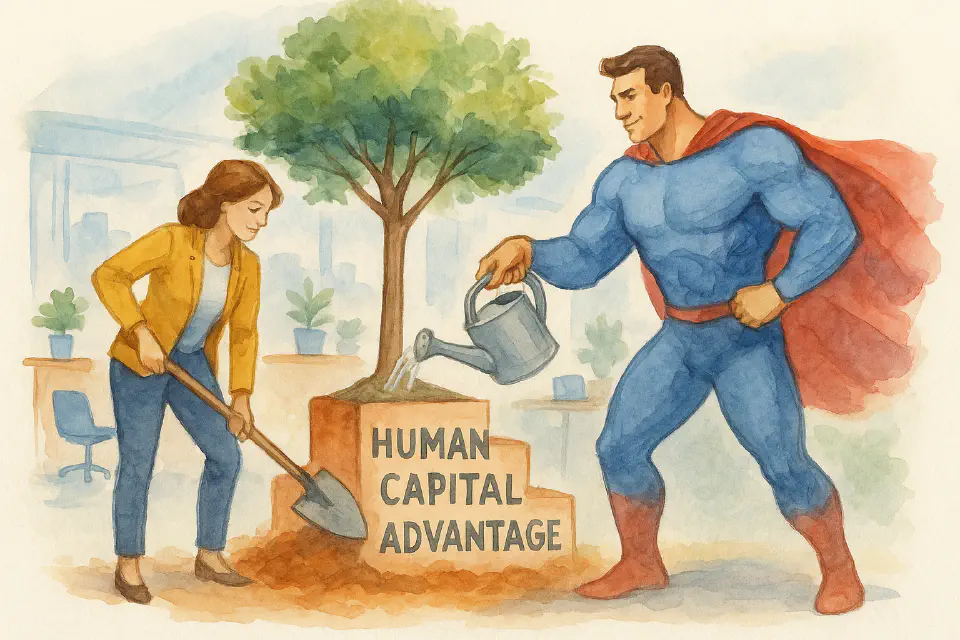
Human Capital Advantage: Building Strategic Talent Assets
Not all talent creates value—but the right capabilities, cultivated deliberately, can become a firm’s edge.
The idea of human capital—the economic value of employees’ skills, knowledge, and abilities—is central to modern HR strategy. But not all human capital is equal. To create a Human Capital Advantage, organizations must focus on building talent that is aligned, hard to replicate, and value-generating.
From Talent to Strategic Asset
Hiring smart people is not enough. Competitive advantage comes from:
- Strategically aligned capabilities
- Organizational systems that amplify those capabilities
- Leadership that invests in long-term development
Unlike general skills, strategic capabilities are:
- Firm-specific
- Built over time
- Deeply embedded in culture and systems
The Role of HR in Building Advantage
To move from talent acquisition to capital advantage, HR must:
- Identify critical capabilities linked to business strategy
- Build learning pathways and internal mobility programs
- Support collaborative knowledge creation
- Protect cultural assets that reinforce behavior and norms
Investing in Learning and Growth
Strategic HR shifts the question from “How do we fill roles?” to:
- “What skills will we need next year?”
- “Which roles create disproportionate value?”
- “How do we accelerate development in those areas?”
This includes:
- Capability academies
- Mentoring and sponsorship
- Cross-functional assignments
- Leadership pipelines
Human Capital Metrics
If people are capital, they deserve capital-grade reporting. HR should track:
- ROI on learning and development
- Leadership depth and succession readiness
- Internal fill rates for key roles
- Engagement tied to high-value teams
Risk Management Through People
Strategic human capital also reduces risk. Key person dependencies, talent gaps, or cultural erosion can threaten business continuity. HR must think like a portfolio manager—diversifying, hedging, and reinvesting.
Conclusion
Human Capital Advantage is earned, not assumed. It requires discipline, alignment, and a long-term lens. Done well, it turns HR into a builder of enterprise value—and talent into a source of competitive resilience.
Next: How some organizations push this even further by treating talent itself as a strategic differentiator.